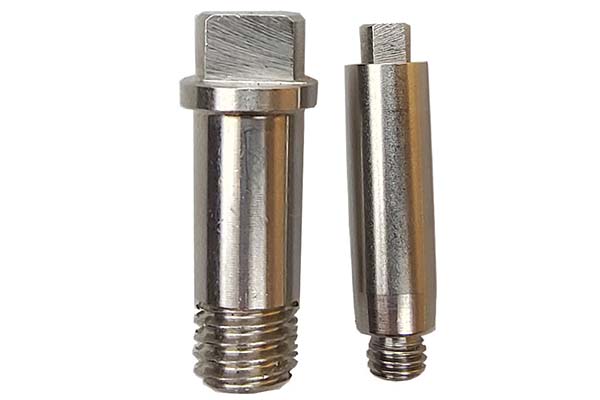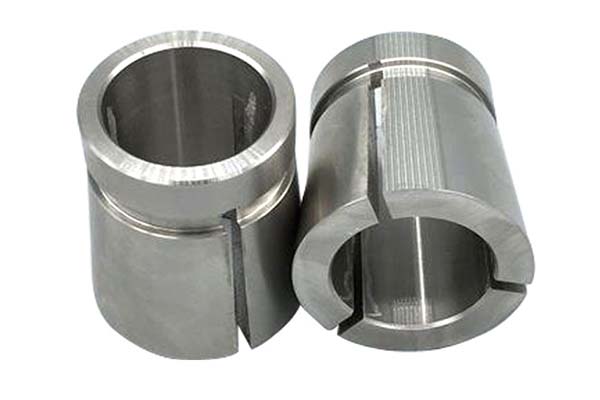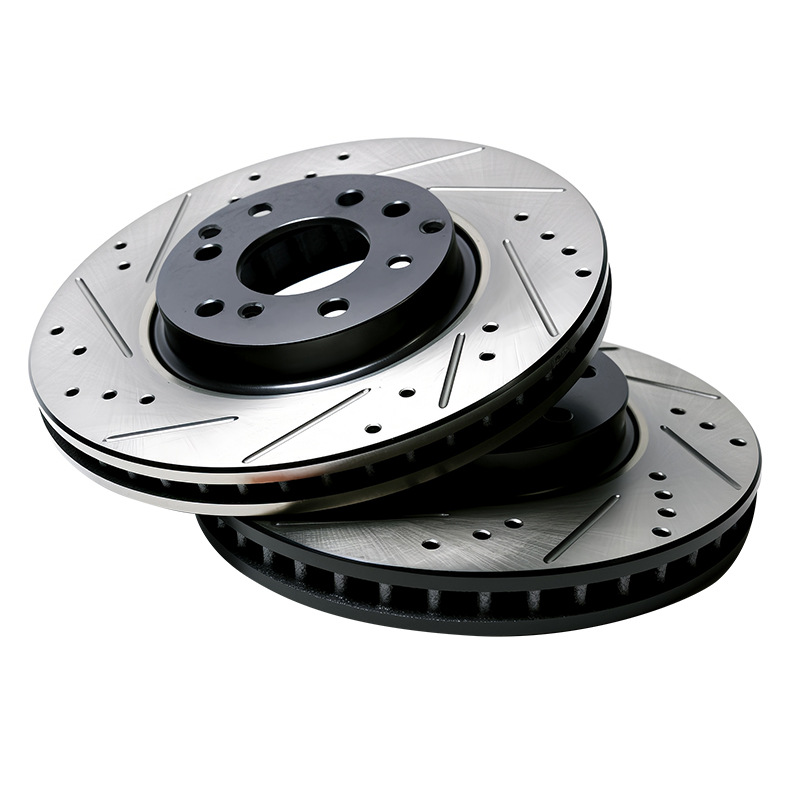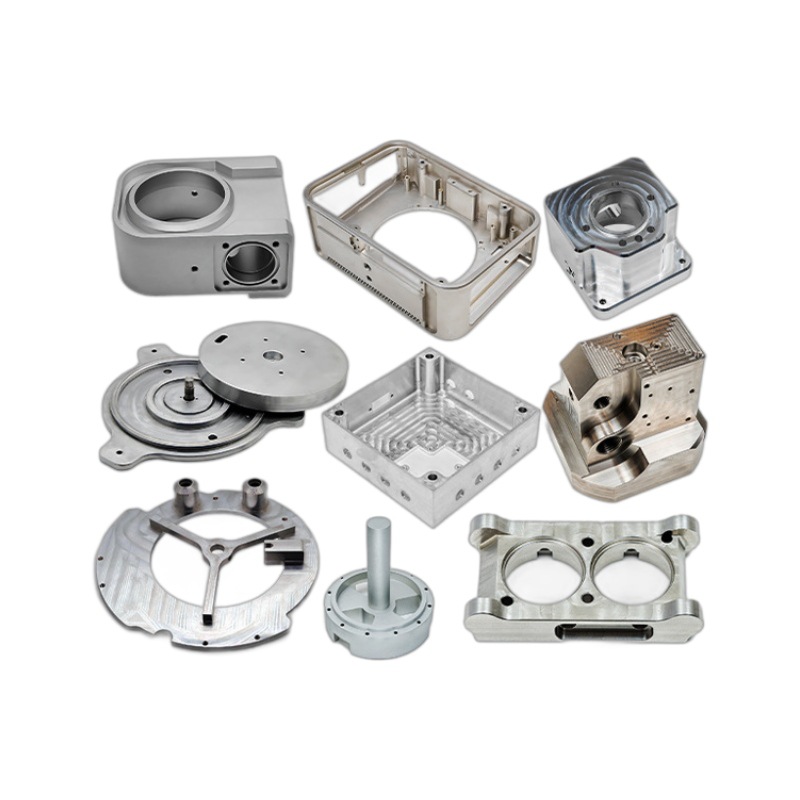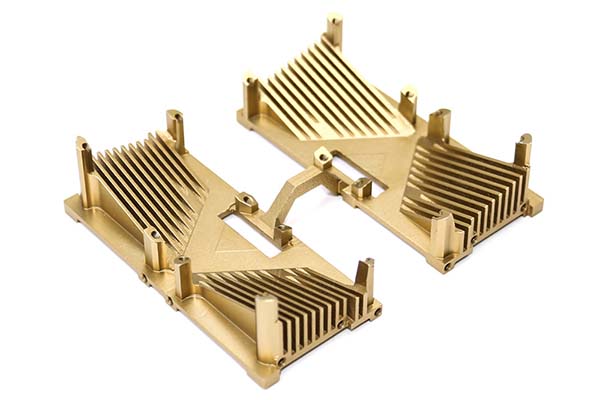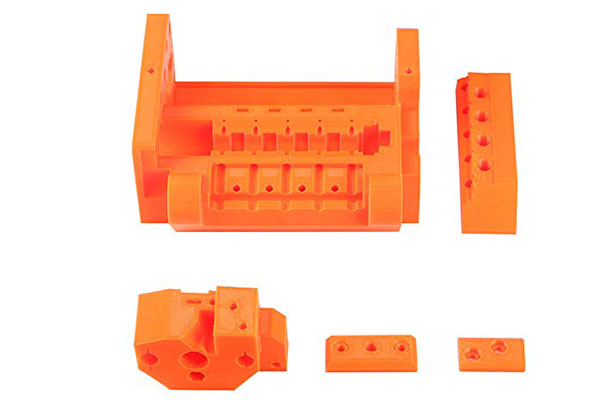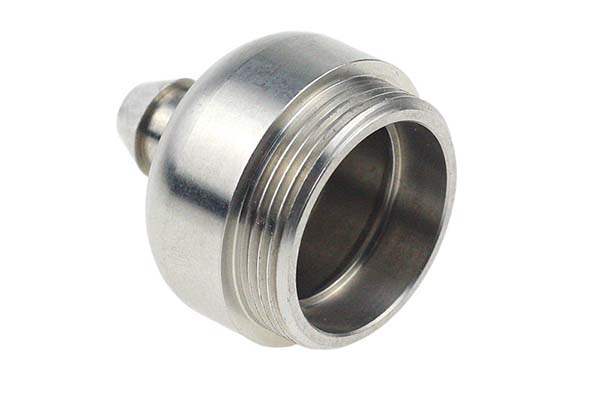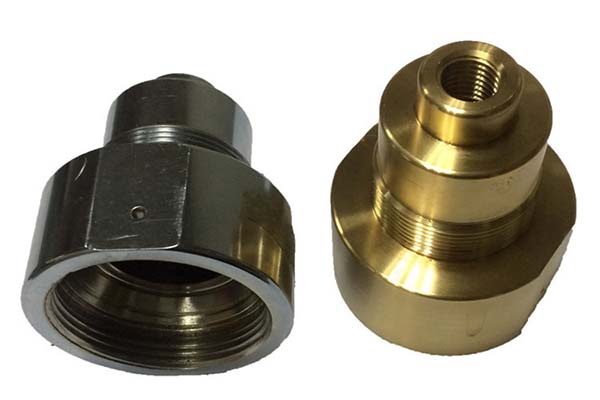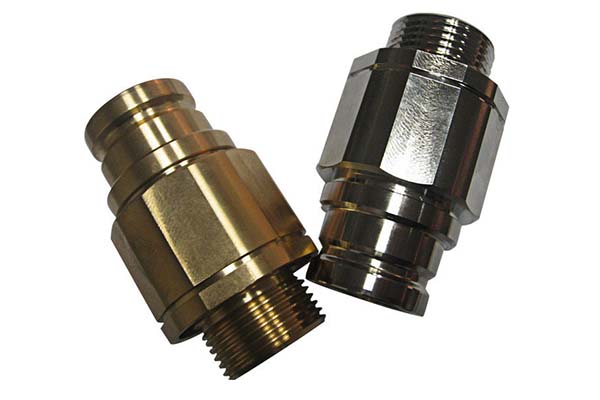Manufacturers seeking a balance of machinability and strength often turn to SS416 stainless steel. As a free-machining variant of martensitic stainless steel, it incorporates sulfur to improve chip breaking and reduce cutting forces, but this also introduces unique challenges. Its sulfur content enhances machinability but lowers corrosion resistance compared to non-sulfurized grades like SS410, making it unsuitable for highly corrosive environments. Additionally, its magnetic properties simplify handling, but heat treatment can cause dimensional changes, requiring precise process control. Distinguishing its capabilities from free-machining austenitic grades like 303 or other martensitic alloys is crucial to avoid performance mismatches in cost-sensitive, high-volume applications. This guide addresses these pain points, offering proven strategies to optimize CNC machining SS416 for efficiency, quality, and reliability in industrial and precision components.
Material Overview – SS416 (Stainless Steel 416)
SS416 stainless steel is a free-machining martensitic alloy designed for ease of processing and moderate strength:
- 416 stainless steel composition: Contains 11.5-13.5% chromium, 0.15% maximum carbon, 0.6-1.2% manganese, 0.15-0.35% sulfur, and trace amounts of phosphorus and silicon. The sulfur forms manganese sulfide inclusions, enabling free-machining characteristics by breaking chips and reducing friction.
- Mechanical properties: In the annealed state, it has a tensile strength of 483 MPa, yield strength of 276 MPa, and hardness of 192 HB. After hardening, tensile strength reaches 725 MPa with hardness up to 40 HRC, balancing strength and machinability.
- Corrosion resistance: Moderate, superior to carbon steel but lower than SS410 due to sulfur inclusions. It resists atmospheric corrosion and fresh water but is susceptible to pitting in chlorides, limiting use in marine or high-moisture environments.
- Magnetic properties: Inherently magnetic, simplifying automated handling in production lines and enabling compatibility with magnetic workholding devices.
- ASTM A582 416 stainless steel: This standard specifies requirements for bar, rod, and wire forms, ensuring consistent chemical composition and mechanical properties for machining applications.
- Comparison with other grades: SS416 vs 304 shows 304 offers better corrosion resistance but poorer machinability, while SS416 vs 316L highlights 316L’s superior chloride resistance but higher cost and slower machining speeds. SS416 outperforms both in terms of machining efficiency and cost in non-corrosive environments.
These traits make SS416 ideal for high-volume applications like fasteners, valve components, and automotive parts, where machinability and cost are prioritized over maximum corrosion resistance.
CNC Machining Process Optimization for SS416
Core Machining Strategies
CNC machining SS416 leverages its free-machining properties but requires optimization for consistent results:
- Best CNC parameters for SS416: Cutting speeds are typically 10-15% higher than SS410 due to improved machinability. For turning, speeds range from 120-180 m/min, while milling operations use 100-150 m/min, reducing cycle times in high-volume production.
- SS416 machining speeds and feeds calculator: Online tools or CAM software can recommend starting parameters, but in practice, feeds of 0.1-0.2 mm/rev (turning) and 0.08-0.15 mm/tooth (milling) balance material removal and tool life.
- Chip control strategies: The sulfur content naturally improves chip breakability, but using tools with aggressive chip breakers further enhances control, preventing chip entanglement in high-speed operations.
- Coolant selection: Soluble oil coolants (5-8% concentration) provide adequate lubrication and heat dissipation, with high-pressure delivery (30-50 bar) flushing chips from the cutting zone—critical for maintaining surface finish in deep-hole drilling.
- High-efficiency machining (HEM): This technique, using high feed rates and moderate depths of cut, reduces cycle times by 20-30% in SS416 compared to conventional machining, leveraging its free-machining properties for maximum productivity.
Tooling Selection & Cutting Parameters for SS416
Optimal Tooling and Parameters
Tooling for SS416 focuses on leveraging its free-machining properties while managing sulfur-induced wear:
- Carbide grade recommendations: ISO K20-K30 grades (e.g., WC-Co with 8-10% Co) offer the best balance of toughness and wear resistance. Their resistance to abrasion from manganese sulfides extends tool life by 30% compared to high-speed steel tools.
- Coated vs uncoated tools: Coated end mills (TiAlN) reduce friction and heat buildup, extending tool life by 40% in milling operations. Uncoated carbide is sufficient for low-volume production but less cost-effective for high-volume runs.
- Cutting parameters:
- Cutting speed (Vc) for lathe operations: 120-180 m/min (annealed) and 80-120 m/min (pre-hardened) balance efficiency and tool wear.
- Feed rate (f): 0.1-0.2 mm/rev (turning) and 0.08-0.15 mm/tooth (milling) prevent chip packing and maintain surface finish.
- Depth of cut (ap): 1-3 mm for roughing and 0.1-0.5 mm for finishing, ensuring efficient material removal without excessive tool load.
- Insert geometry: Positive rake angles (5-10°) reduce cutting forces, while sharp edges minimize work hardening. For interrupted cuts, inserts with reinforced edges prevent chipping in applications like valve body machining.
- Minimum quantity lubrication (MQL): Effective for small parts, reducing coolant costs by 90% while maintaining tool life with vegetable-based lubricants delivered at 50-100 mL/hour.
Surface Finish & Post-Machining Treatments
Achieving Desired Surface Characteristics
SS416’s surface finish is critical for both appearance and performance, with post-processing addressing its limitations:
- Achieving Ra 0.8 on SS416 CNC parts: This requires finish passes with high cutting speeds (150-180 m/min), low feeds (0.05-0.1 mm/rev), and sharp tools. Polishing with 400-grit abrasive can further reduce roughness to Ra 0.4 μm for precision components like hydraulic valve spools.
- Passivation: Nitric acid treatment removes free iron from the surface, improving corrosion resistance by 20-30% in humid environments—essential for outdoor or high-moisture applications.
- Electropolishing: This process reduces surface roughness to Ra ≤ 0.2 μm, enhancing aesthetics and reducing friction in moving parts like shafts and bushings.
Heat Treatment and Stress Management
- Heat treatment (hardening & tempering): Hardening at 925-1010°C followed by oil quenching achieves 40-45 HRC, while tempering at 200-300°C retains hardness for wear parts. Tempering at 600°C reduces hardness to 25-30 HRC for improved toughness in impact applications.
- Stress relieving temperature: Heating annealed parts to 650°C for 1 hour before hardening reduces residual stresses, preventing warping during quenching—critical for thin-walled components like firearm slides.
- Shot peening: This process induces compressive stresses in the surface layer, improving fatigue life by 30-50% in high-cycle components like pump shafts.
Common Defects, Troubleshooting & Quality Control
Addressing Machining Issues
- Built-up edge (BUE) formation: Occurs at low cutting speeds or with dull tools, causing surface defects. Increasing cutting speed by 10-15% or using TiAlN-coated tools minimizes BUE by reducing friction and heat buildup.
- Chatter marks: Caused by tool deflection or machine vibration, especially in long-reach milling. Using rigid tool holders and reducing overhang by 50% eliminates chatter, ensuring smooth surfaces.
- Dimensional instability: Heat treatment can cause 0.05-0.1% growth in critical dimensions. Compensating with pre-machining allowances (0.1-0.2 mm) and stress relieving before hardening minimizes dimensional changes.
- Micro-cracking: Occurs during hard turning of high-hardness parts (≥38 HRC). Using low cutting speeds (50-70 m/min) and sharp tools with honed edges (0.02 mm) prevents cracking.
Quality Control Protocols
- CMM inspection: Verifies dimensional tolerance of ±0.01 mm for precision parts like medical instrument components, ensuring compliance with design specifications.
- SPC charts: Monitor process variation in high-volume production, with control limits set for critical parameters like cutting speed and feed rate to maintain consistent quality.
- Root cause analysis (RCA): Investigates defects like micro-cracks or surface roughness, using tools like fishbone diagrams to identify causes (e.g., tool wear, coolant flow) and implement corrective actions.
Industry Applications & Case Studies
SS416 excels in high-volume, cost-sensitive applications requiring good machinability:
- Automotive fasteners: High-volume production of bolts and nuts benefits from SS416’s free-machining properties, reducing cycle times by 20% compared to SS410.
- Hydraulic valve bodies: Machined with tight tolerances (±0.02 mm), leveraging SS416’s dimensional stability after heat treatment. A case study showed a 15% reduction in scrap rates after switching from 303 to SS416.
- Firearms components: Slides and frames machined from SS416, then hardened to 38-40 HRC for wear resistance. Its machinability reduces production costs while meeting strict dimensional requirements.
- Pump shafts case study: A manufacturer replaced SS410 with SS416, increasing production rate by 25% due to faster machining speeds, with no loss in service life for non-corrosive water applications.
Cost Analysis & Supply-Chain Considerations
Economic Factors
- SS416 bar stock price per kg: Approximately $4.5-5.5/kg in 2025, 10-15% higher than SS410 but 20% lower than 303 stainless steel, making it cost-effective for high-volume production.
- Machining cost per minute: 15-20% lower than SS410 due to reduced tool wear and faster cutting speeds, offsetting its higher material cost in large runs.
- Scrap rate optimization: SS416’s improved chip control reduces scrap from 5% to 2-3% in high-volume operations, further lowering production costs.
Supply Chain Management
- Lead time: 2-3 weeks for standard bar stock, with custom sizes requiring 4-6 weeks. Just-in-time delivery is feasible for automotive Tier 1 suppliers with established relationships.
- Minimum order quantities (MOQ): Asian suppliers typically require MOQs of 500 kg, while domestic suppliers may offer smaller quantities (100 kg) at a premium.
- Total cost of ownership: SS416 vs 17-4 PH shows 17-4 offers better corrosion resistance but costs 30% more, making SS416 preferable for non-corrosive, cost-sensitive applications.
Yigu Technology’s Perspective
At Yigu Technology, we specialize in CNC machining SS416 for automotive, firearm, and industrial clients. Our data shows that using TiAlN-coated carbide tools with high-pressure coolant reduces tool wear by 40% compared to uncoated tools in high-volume valve body production. We recommend machining SS416 in the annealed state (192 HB) for maximum efficiency, then hardening to client specifications—achieving tolerances as tight as ±0.01 mm. For corrosion-prone applications, we offer passivation services that improve SS416’s resistance by 30% while maintaining its machined surface finish. Our compliance with ISO 9001 and IATF 16949 ensures consistent quality, making SS416 components a cost-effective solution for high-volume, precision applications.
FAQ
- What makes SS416 a free-machining stainless steel?
SS416 contains 0.15-0.35% sulfur, which forms manganese sulfide inclusions that break chips and reduce friction during cutting. This enhances chip control and lowers cutting forces, making it 30-40% faster to machine than non-sulfurized martensitic grades like SS410.
- When should SS416 be chosen over 303 stainless steel?
SS416 is preferred for applications requiring heat treatability (hardness up to 40 HRC) and lower cost. While 303 offers better corrosion resistance, SS416 provides higher strength after heat treatment and is 20% cheaper, making it ideal for non-corrosive, high-strength components like firearm parts.
- How does SS416’s corrosion resistance compare to SS410?
SS416 has lower corrosion resistance than SS410 due to sulfur inclusions, which act as corrosion initiation sites. It is suitable for dry or mildly corrosive environments but should be avoided in marine, high-moisture, or chloride-rich applications where SS410 or austenitic grades would perform better.
